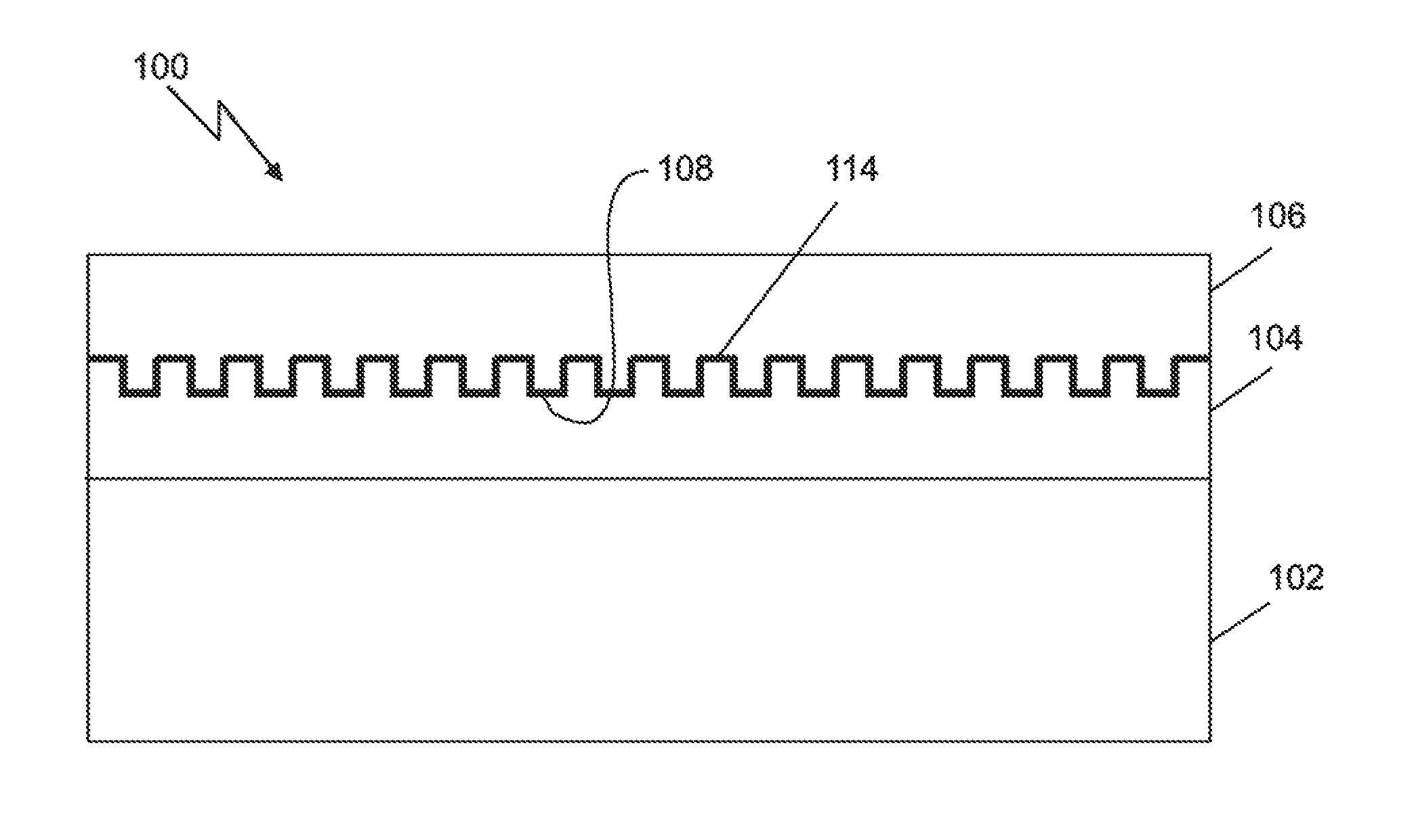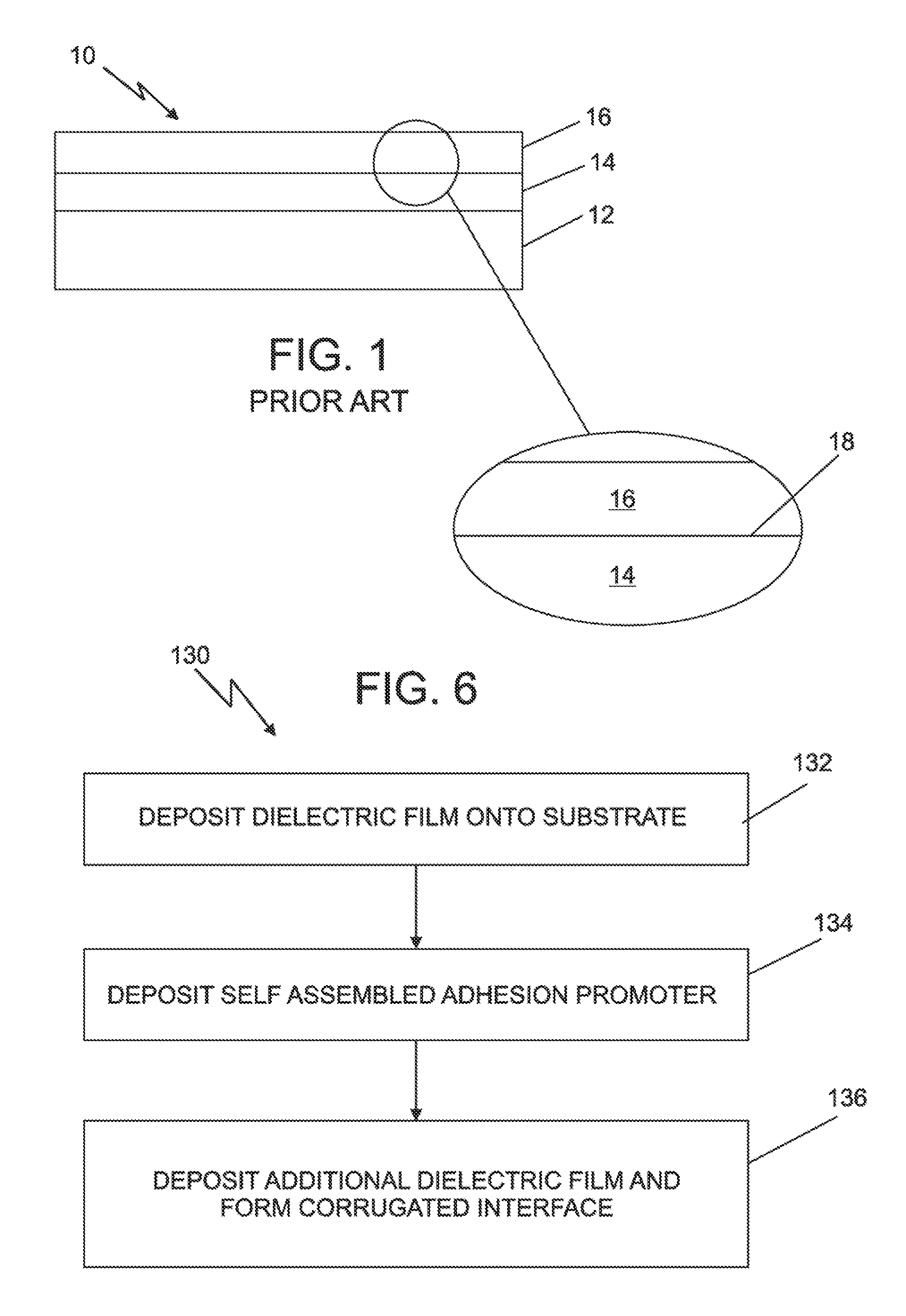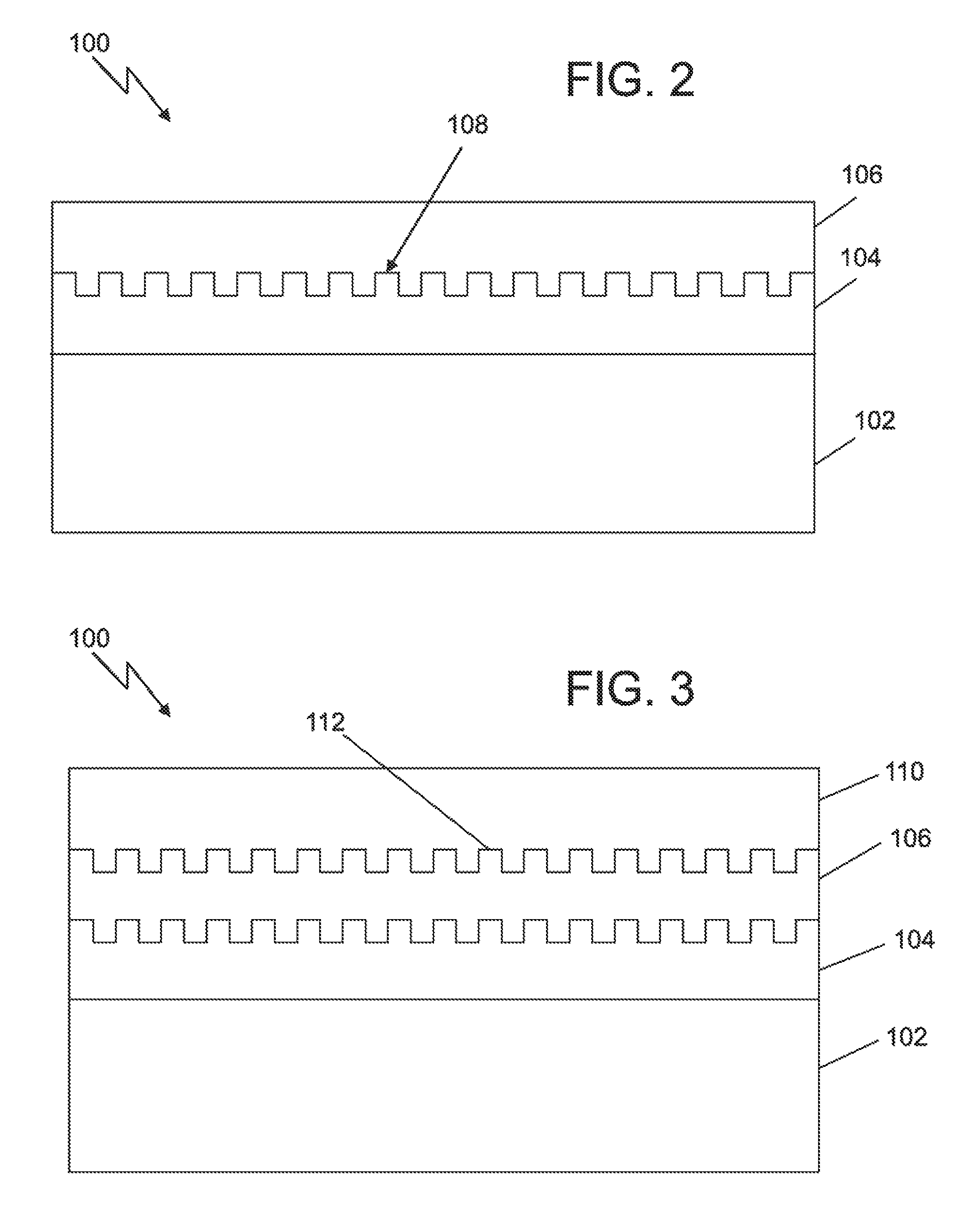Corrugated interfaces for multilayered interconnects
a multi-layered interconnect and corrugated technology, applied in the direction of printed element electric connection formation, insulation bodies, transportation and packaging, etc., can solve the problems of mechanical failure, adhesion failure, fracturing of one or more layers, etc., to increase the crack front tortuousity, increase the interlayer adhesion, and enhance the cracking/fracture resistance
- Summary
- Abstract
- Description
- Claims
- Application Information
AI Technical Summary
Benefits of technology
Problems solved by technology
Method used
Image
Examples
Embodiment Construction
[0031]Self assembled films that laterally phase separate into regions with distinct compositions throughout the film are ideally suited as corrugation templates as the length scale in which the phase separation occurs can be in the range of approximately 5 to 100 nm. There are numerous examples of self assembled films that may be utilized for these purposes and they include a polymer mixture, a block copolymer, a mixture of homopolymer and block copolymer, a mixture of different block copolymers, a mixture of homopolymer and nanoparticles, a mixture of block copolymer and nanoparticles, sol-gel system containing surfactants, or any combination thereof. The invention is not intended to be limited to any particular type of self assembled film. By way of example, the polymers can contain block structures that contain spatially separated hydrophilic and hydrophobic blocks, i.e., amphiphilic polymers.
[0032]Referring now to FIG. 2, there is shown device 100 that includes controlled, nanom...
PUM
| Property | Measurement | Unit |
|---|---|---|
| widths | aaaaa | aaaaa |
| thickness | aaaaa | aaaaa |
| diameter | aaaaa | aaaaa |
Abstract
Description
Claims
Application Information
 Login to View More
Login to View More - R&D
- Intellectual Property
- Life Sciences
- Materials
- Tech Scout
- Unparalleled Data Quality
- Higher Quality Content
- 60% Fewer Hallucinations
Browse by: Latest US Patents, China's latest patents, Technical Efficacy Thesaurus, Application Domain, Technology Topic, Popular Technical Reports.
© 2025 PatSnap. All rights reserved.Legal|Privacy policy|Modern Slavery Act Transparency Statement|Sitemap|About US| Contact US: help@patsnap.com



